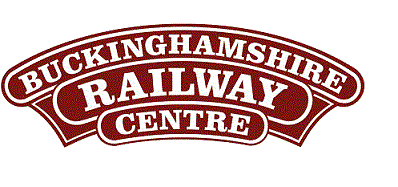
BRC Website Home
Quainton Virtual Stockbook
Quainton News Archive -
Quainton News No. 11 - March 1972
Quainton Road - Part 2

BRC Website Home
Quainton Virtual Stockbook
Quainton News Archive -
Quainton News No. 11 - March 1972
Quainton Road - Part 2
|
In Part 1 in our December 1971 issue we outlined the story of Quainton from the opening of the first railway from Aylesbury to Claydon in 1868, the opening of the Brill branch three years later and the coming of the Great Central to London in 1899. We traced the decline of Quainton as a railway junction to its closing to passengers in 1963 and to goods in 1966, and we asked our readers for all the help they could give to expand the history to the fullest extent. The response has been good! Some research at Aylesbury Reference Library has also yielded some interesting snippets. Over sixty years ago, on 16th November 1910 a lecture was given to the Church of England Men's Society by a Mr Thomas John Parker entitled, "Quainton, fifty years ago". Mr Parker had been the Assistant Master at Quainton School and his lecture was published in Aylesbury in 1915. Here are some extracts referring to the building of the first railway through Quainton. "It is just about fifty years ago that the railway through Quainton - or part of it - was begun. It seems that it had been begun at Verney Junction and when the men had got as far as Hogshaw Cutting a Mr Quainton, of Lee, stopped them from coming any further with it as it had then reached his estate and no money had been pa id for the land over which they intended to lay it. To resume work the men went to Kimble or somewhere close by Stoke Mandeville, "Neddy" Taylor being one of the "great" among the railway men." "During this time some of the men under the foremanship of the contractor built the Infants' School, the date being 1861 and the contractors name being Rummens." "Even after all the difference had been so far settled that the railway was done, and bear in mind 'twas a single line this, the Rev T Williams of Waddesdon in some way or other prevented the trains from running at all one day until they had paid for his land over which they had laid the railway. I believe that he employed some men to take up a length of the rails in order that the train should not run." "The train in its early stages was drawn by a horse and even when it first had a 'puffing billy' attached to it, didn't go so wonderfully fast." These are reports of events of over a century ago, written by those who saw the railway come to the district when Quainton's population was under eight hundred persons. A photograph has been found showing Quainton Road station taken about 1883 and the Brill branch train is headed by an 0-4-0 side tank engine which is probably the first Wotton, delivered in 1877 from W G Bagnall and Co. Stafford. Wotton has inside cylinders, small side tanks, a tall stovepipe chimney, a steam dome carrying safety valves (but without a cover) and no cab is fitted. The branch train comprises a milk van, three single plank wagons and the well known Oxford and Aylesbury Tramroad four wheeled carriage at the rear. Quainton Road Station stood almost exactly on the line of the present day road bridge. It was of brick, single storey and about 35 feet long by 12 feet wide. The roof was slated or tiled and ridged along the length of the building with hipped ends. A chimney stack with two pots halfway along the roof suggests a division into two rooms and this design is likely because there are two four pane sash windows. The station building was on the upside and there was a double semaphore signal on a tall post on the 'county' end of the platform. The roof of the building was carried down in a continuous slope from the centre ridge to the gutter which was bracketed to the rafters extended to form a canopy about three feet wide. This provided scant cover for passengers but the nameboard 'Quainton Road' was fixed to the wall under the canopy, nice and dry. The small goods yard was on the down side of the main line opposite the building and was, of course, on the 'Verney' side of the road which was neatly bordered by hedges. Before we leave this bygone era perhaps you would look up Station Road towards the village in say, October 1850. It's a day with a north east wind and Quainton Hill is shielding the windmill from the breeze. So, instead of the mill being driven by the wind the miller, Mr James Anstress is using his large steam engine for the purpose and we should see the smoke from the stack and the steam exhaust. Quainton Mill, a tower mill, was the tallest in the county, had six floors and was a hundred feet high. It was built in 1830 and although exposed to south and westerly winds it was sheltered behind the hillside. Is the tremendous stone base for the engine still there? It took a team of sixteen horses to bring it to its destination so it´s likely to be! |
|
Notes: Reference: |
Text © Quainton Railway Society / Photographs © Quainton Railway Society or referenced photographer
Email Webmaster
Page Updated: 17 October 2017